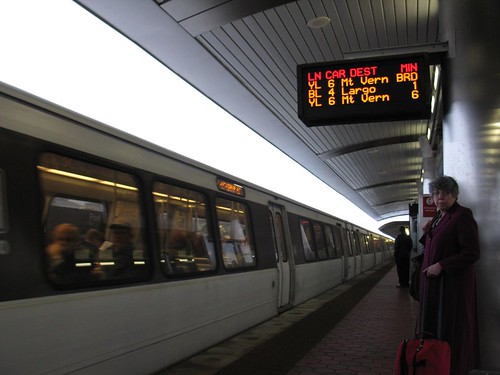 Fifteen months after a crippling flood exposed deep-rooted communications and technology problems at the MTA, the transportation authority has unveiled a text-message and e-mail alert system designed to bring up-to-date information to the masses in near-real time.
Fifteen months after a crippling flood exposed deep-rooted communications and technology problems at the MTA, the transportation authority has unveiled a text-message and e-mail alert system designed to bring up-to-date information to the masses in near-real time.
The agency’s press release has the details:
Using the MTA’s website at www.mta.info, customers can register to receive alerts about any combination of subway lines, bus routes, rail lines, bridges or tunnels. They can choose to receive them 24/7, or only during a particular time of day or week. The system will use an email transmission technology called Distributed Processing, giving it the capability of sending out up to a million messages every five minutes.
“This is a revolutionary step that has the potential to transform the experience our customers have with us,” said Elliot G. Sander, the Executive Director and CEO of the MTA. “If you know about a service disruption before you leave your home, or now, even as you are making your way to a subway or rail station or a bus stop, you can avoid the frustration of delays by seeking an alternate route.”
The launch of this system…It marks the first time that the MTA will send timely notifications of unplanned service disruptions on subways, buses, bridges or tunnels, and is the first MTA service to use text messaging.
This service is being provided in partnership with the MIS Sciences Corporation under a $10,000-a-month contract that includes an unlimited volume of emails and text messages. While the MTA will not charge customers to use this service, those customers who have cell phone plans that charge for incoming text messages will be liable for those fees.
Interested straphangers can sign up for the service at MyMTAAlerts.com.
In a way, the MTA has a lot riding on this plan. They’re paying out a decent chunk of change for it, but more importantly, riders are going to depend on it for immediate service alerts. For those who aren’t yet underground, the system will be the first way for many riders to find out that they need to change their travel plans, and if a major outage occurs, as it did with the August 2007 flood, the service will have to guide commuters throughout the city.
Furthermore, the MTA’s technological reputation hinges on it too. With the train arrival board project facing an uncertain future, Computer-Based Train Control far off and GPS-based bus arrival boards a bust, the MTA’s technological track record has been far from perfect lately. They’ve gone through an extensive testing process with this alert system and feel that it’s ready for showtime.
The early word though is mixed. A friend of mine signed up for service alerts along the N/R/Q/W lines, and while the MTA recently released an alert for those lines, that friend received the concurrent alert about problems on the F instead. On the good side, the alert arrived, but it was for the wrong line. For now, we can chalk that up to first-day jitters, and we’ll just have to see how it works going forward.





 In a ceremony this morning at Grand Central Terminal, Google and the MTA announced a partnership designed to bring New York Metropolitan area transit directions to Google Transit, a feature of the popular Google Maps. Users will now be able to find comprehensive directions for New York City Transit, the Long Island Rail Road, Metro-North and the area’s bus service in one place.
In a ceremony this morning at Grand Central Terminal, Google and the MTA announced a partnership designed to bring New York Metropolitan area transit directions to Google Transit, a feature of the popular Google Maps. Users will now be able to find comprehensive directions for New York City Transit, the Long Island Rail Road, Metro-North and the area’s bus service in one place.
 There’s an old saying out there that goes something like this: All is fare in love and subways. Or perhaps that’s love and war. But either way, this week has not been a good one for public transit and fare-payment technologies.
There’s an old saying out there that goes something like this: All is fare in love and subways. Or perhaps that’s love and war. But either way, this week has not been a good one for public transit and fare-payment technologies.